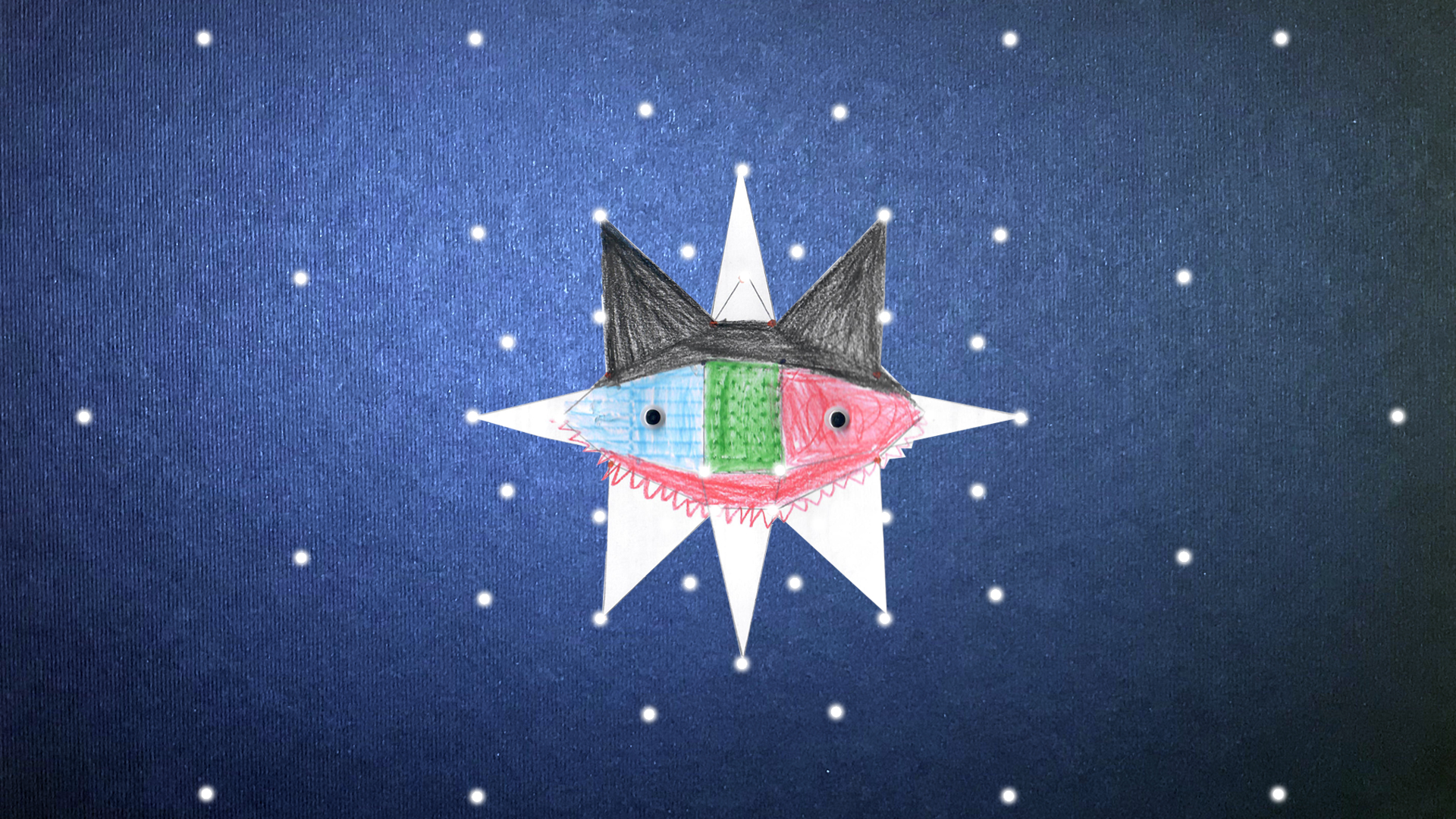By Simona Moundrouvalis – s.moundrouvalis@gmail.com
This is a creative tool you can use to invent infinite kind of stars, as there are infinite stars in the Universe and equally endless ways to imagine them. It was presented for the first time in a Public Library in Vicenza, a city in the northeast of Italy, and I hope it will reach many houses all around the world.
Many different stars will born and they will be unique as every human being.

How were the very first stars born in the Universe? Where they come from?
A simple and clear explanation I really like, is the following by the “Lady of the Stars”, the extraordinary scientist and astrophysicist Margherita Hack:
There are no certainties in science. We try, with experiment and observation, to discover the laws that govern the Universe. […] Studying it and observing it, we discovered that, once upon a time, the Universe was small, small, small and hot, hot, hot. Then, it began to inflate like a balloon and the temperature started to drop and stars formed. And after thousands of thousands of thousands of years it has become what we know today.

How drawing a star?
As a starting point, I have borrowed an idea by the great designer Bruno Munari, from his book “Fantasia”:
A leaf can be explored to make its hidden relationships visible.
Starting from the tracing of an oak leaf, Munari has drawn its outline and got out of it a pattern made up of dots. Then he has connected these points in many different ways, creating different relationships between them.
Everyone will find their own shapes but always in relation to the leaf. (…) The variations are personal and infinite.

I am going to propose to you a set of dots myself, that I got starting from the expansion of a central point: that small and hot material point that has exploded into a myriad of points, through rotations around its center, with progressively greater radii… BIG BANG!

Now try to connect the dots. There are endless possibilities! For example, you can start joining some points to create a closed shape: a 4, 5, 6, 10-pointed star …
Here are some of the possible shapes, which can be traced with the help of a ruler or freehand (varying the type of line).
Starting from the same basic scheme, very different shapes will come out: small or large, symmetrical or asymmetrical, common or bizarre, straight or crooked, simple or complex, through your personal, creative exploration.
The shapes can also be combined with each other to create more complex structures. I created the following examples by choosing some dots in a symmetrical way.

To facilitate those wishing to get regular shapes, I recommend highlighting some dots from time to time.

You can play by drawing lines, simple or broken, parallel or incident, horizontal or vertical. Using transparent paper, you can overlap different shapes to create more complex ones.

You can also create compositions by combining different geometric shapes, symmetrically or randomly.

You can download the template clicking here and then print it; you can also create a stencil by piercing the dots with an awl (preferably on cardboard), in order to use it several times and possibly transfer the points also on different types of paper or other kind of surfaces (cardboard , cloth, tinfoil, etc.).

There are no limits about techniques and materials! The lines can be traced with markers, pencils, pastels, chalks. Shapes can be filled by colors or cut and eventually joined together with a brad. You can also create a stencil with the clipped template and, for example, use it with a sponge soaked in paints.

Another way is transfering the pattern onto a wooden board and place some tacks or pins on the chosen points to create intertwining wires, thin iron wire or pipe cleaners; or you can embroider the lines with needle and thread, on cardboard or felt.

Here are the stars created with my son Daniele during a rainy weekend. My favorite is the cat-star that stands out among all for that special fantasy, typical of children, that always amazes me!

If we let a beam of light pass through the holes of the stencil in the dark… we will all meet again in the space! Enjoy your exploration!

I sincerely thank Roberta, for hosting me on RobertapucciLab and, above all, for having accompanied me with her teachings and experience in a so inspiring learning journey.
I would like to share with you some words by Margherita Hack that impressed me for her “scientific poetry” and that, during difficult times, can bring us closer to each other:
We all have a common origin, we are all children of the evolution of the Universe, of the evolution of the stars, and therefore we are really all brothers.
We are made of matter that has been created inside the stars. All the elements, from hydrogen to uranium, have been made in the nuclear reactions that take place in supernovae: these stars, much larger than the Sun, at the end of the their lives explode and scatter in the space the result of all the nuclear reactions that took place within them. Thus, we are all really children of the stars.

P.S. Simona Moundrouvalis is a graphic designer from Vicenza, Daniele’s mother, curious researcher.
She designed this idea while taking a private class by RobertapucciLab about creative workshops. The Cat Star of the cover image is by Daniele (7 years old). Thank you for sharing Simona!

